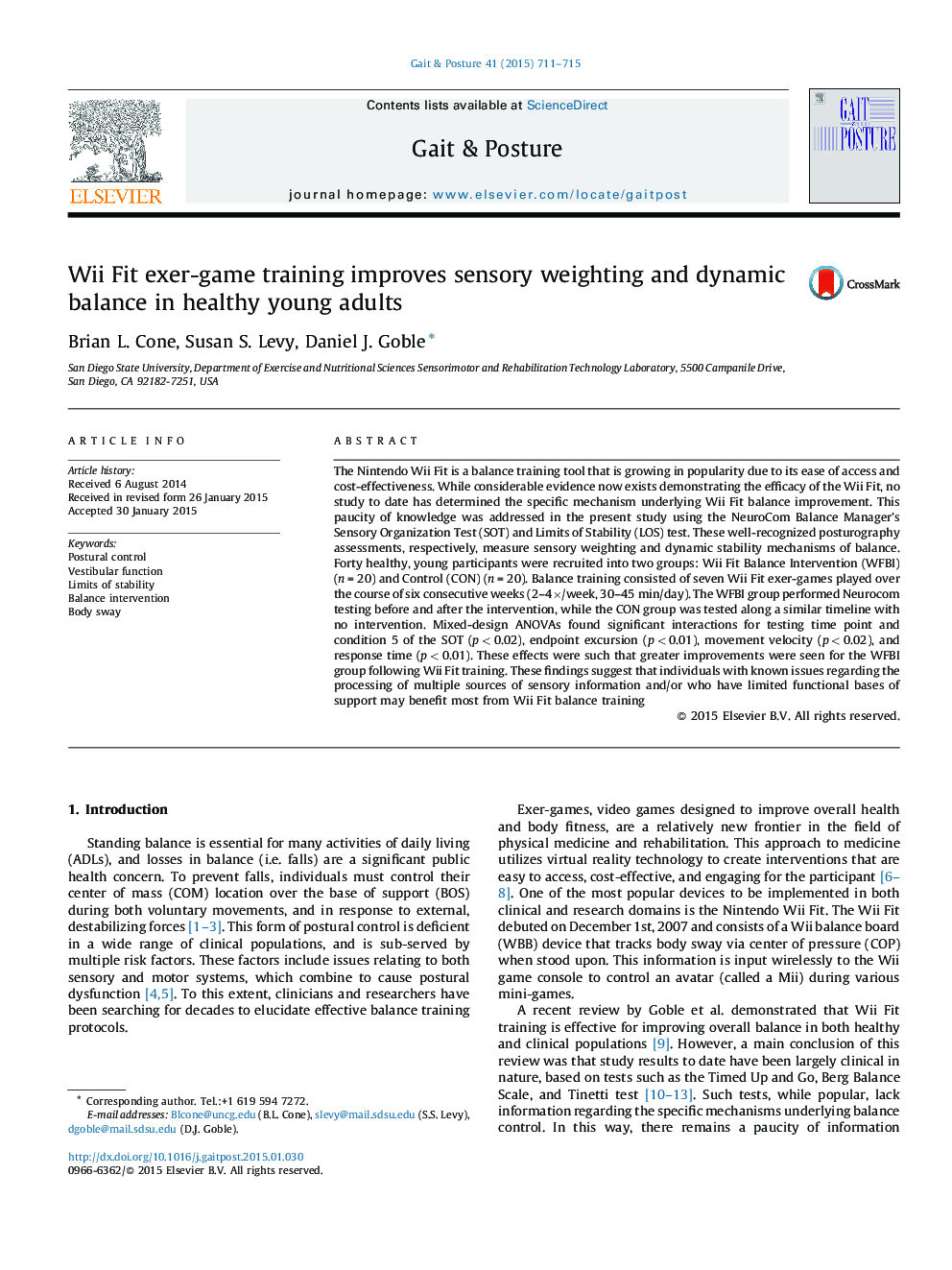| Article ID | Journal | Published Year | Pages | File Type |
|---|---|---|---|---|
| 6206206 | Gait & Posture | 2015 | 5 Pages |
â¢Wii Fit exer-gaming targets sensory reweighting and dynamic balance.â¢Sensory reweighting was found for condition 5 of the sensory organization test.â¢Dynamic balance was determined by the limits of stability test.
The Nintendo Wii Fit is a balance training tool that is growing in popularity due to its ease of access and cost-effectiveness. While considerable evidence now exists demonstrating the efficacy of the Wii Fit, no study to date has determined the specific mechanism underlying Wii Fit balance improvement. This paucity of knowledge was addressed in the present study using the NeuroCom Balance Manager's Sensory Organization Test (SOT) and Limits of Stability (LOS) test. These well-recognized posturography assessments, respectively, measure sensory weighting and dynamic stability mechanisms of balance. Forty healthy, young participants were recruited into two groups: Wii Fit Balance Intervention (WFBI) (n = 20) and Control (CON) (n = 20). Balance training consisted of seven Wii Fit exer-games played over the course of six consecutive weeks (2-4Ã/week, 30-45 min/day). The WFBI group performed Neurocom testing before and after the intervention, while the CON group was tested along a similar timeline with no intervention. Mixed-design ANOVAs found significant interactions for testing time point and condition 5 of the SOT (p < 0.02), endpoint excursion (p < 0.01), movement velocity (p < 0.02), and response time (p < 0.01). These effects were such that greater improvements were seen for the WFBI group following Wii Fit training. These findings suggest that individuals with known issues regarding the processing of multiple sources of sensory information and/or who have limited functional bases of support may benefit most from Wii Fit balance training
